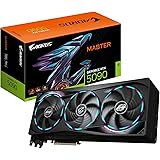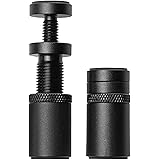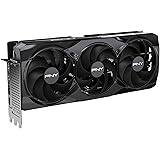The AMD Radeon HD 7990 is a powerful graphics card that was launched several years ago, yet it remains an interesting piece of technology in the realm of computer graphics. Designed primarily for gamers and professionals requiring high-performance graphical computing, the Radeon HD 7990 showcases impressive specifications that contribute to its capabilities.

One of the standout features of the Radeon HD 7990 is its memory size. With a total of 6GB GDDR5 memory, this graphics card allows for smooth performance in demanding applications and games. The GDDR5 memory is particularly beneficial for high-resolution textures, ensuring that gamers experience detailed graphics without lagging or stuttering during gameplay. Additionally, the memory clock speed of 1500MHz contributes to its high performance, enabling fast data access and processing.
Another critical aspect of the HD 7990 is its memory bandwidth, rated at an impressive 288 GB/s. This high memory bandwidth allows for the fast transfer of data between the GPU and RAM, which is crucial for rendering complex scenes and high-resolution images quickly. This performance is particularly noticeable in modern gaming environments where graphical fidelity is paramount.
The Radeon HD 7990 is equipped with 4096 stream processing units, organized into 64 compute units. This feature allows the card to handle multiple tasks simultaneously, making it particularly effective for parallel processing applications, such as rendering video content or performing complex calculations. Its single precision compute power is rated at 8. 2 TFLOPs, making it suitable for intensive gaming and professional applications alike.
In terms of texture mapping capabilities, the 7990 has 256 texture units, which enhance image quality and detail levels whenever the card processes textures. This is particularly crucial in today’s gaming industry, where textures play a significant role in creating an immersive experience.
The Radeon HD 7990 utilizes the PCI-Express 3. 0 x16 interface, ensuring high-speed communication between the graphics card and the motherboard. Additionally, its cores, totaling 2048, run at a core clock of 1000 MHz, with a boost clock of up to 950 MHz during high-demand scenarios. This enhances overall performance during gaming and resource-heavy tasks.
For outputs, the card includes one DVI port and four mini-DisplayPort connections, allowing users to connect multiple monitors for an expansive visual setup. However, it is worth noting that the HDCP support is absent, which may limit its utility for some users wanting to watch protected content.
The AMD Radeon HD 7990, with its robust specifications such as 6GB GDDR5 memory, 288 GB/s memory bandwidth, and powerful processing capabilities, offers substantial performance for both gaming and professional use. While newer graphics cards are now available on the market, the HD 7990 still provides a strong option for those interested in high-level graphics performance. As technology continues to evolve, understanding these specifications helps users make informed decisions about their computing needs.
Another crucial aspect of the Radeon HD 7990 is its mining hashrate, particularly for Ethereum mining in 2018. The card can achieve a hashrate of approximately 36 MH/s when mining using the DaggerHashimoto algorithm, which is prevalent in Ethereum and Ethereum Classic mining. This performance level indicates that the Radeon HD 7990 can still be a viable option in the cryptocurrency mining landscape, even as technology continues to advance.
Power consumption is an essential consideration for anyone looking to use the Radeon HD 7990, especially in mining scenarios. The card has a power consumption rate of 375 watts per hour, which is significant but manageable with the right PSU. Users must account for this consumption, as it will impact electricity costs and overall efficiency.
AMD Radeon HD 7990 Specifications :
- Memory size : 6GB GDDR5
- Memory Clock : 1500MHz
- Memory Bandwidth : 288 GB/s
- Streem Processing Units : 4096 ( 64 compute units )
- Single Precision Compute Power : 8.2 TFLOPs
- Texture Units : 256
Interface : PCI-Express 3.0 x16
Cores : 2048 x2
Core Clocks : 1000 MHz
Boost : Up to 950 MHz
Game : Up to 1000 MHz
Memory Bus : 384 bit x2 (768 Total)
Output : DVI x1
mini-DisplayPort x4
HDCP Support : No
Power consumption : 375 W Maximum
Power connectors : 2x 8-pin power connectors
Recommended PSU : 750 W
DirectX Version Support : 12 (11_1)
OpenGL Version Support : 4.6
Digital Maximum Resolution : 2560×1440

AMD Radeon HD 7990 Mining Hashrate ( Ethereum Mining in 2018 ) :
- DaggerHashimoto [ EtHash : (ETH) & (ETC) ] Mining Hashrate : 36 MH/s
Power Consumption : 375 Watt/Per Hour.
Updated Look at Current Trends – Mining with the HD 7990 in 2025
The HD 7990, a graphics card released by AMD in 2013, may still hold value for cryptocurrency mining, particularly for coins that utilize the Ethash algorithm, such as Ethereum Classic (ETC). Despite its age, the HD 7990 can technically still participate in mining activities, but its effectiveness is under scrutiny due to lower hash rates and poor electricity efficiency.
Mining Ethereum Classic with the HD 7990 yields a hash rate of approximately 9 MH/s (megahashes per second). At this rate, miners can expect returns ranging from $0. 20 to $0. 50 per day before considering electricity costs. This amount is quite low when compared to the investments made in energy and hardware. The efficiency of the HD 7990 also reflects its age, as it consumes around 41 joules per megahash, which is significantly higher than newer graphics cards that offer much better performance with lower energy consumption.
Beyond Ethereum Classic, there are other cryptocurrencies that can still be mined using the HD 7990. Coins like Ravencoin, which operates on the KawPow algorithm, achieve higher hash rates around 32 MH/s. However, even with this higher hash rate, the monthly returns remain modest, averaging around $10. This translates to approximately $0. 33 per day, once again highlighting the poor performance of older mining hardware in a rapidly evolving market. Other coins such as Flux and Ergo offer similar returns, but overall, profitability remains disappointing with the HD 7990.
The disappointment in the HD 7990’s performance can largely be attributed to the advancements in mining technology. The market has seen the emergence of more efficient graphics cards that not only achieve higher hash rates but also consume less power. The newer generation of GPUs can produce considerably more income while minimizing electricity costs, making them a more attractive option for miners.
While the HD 7990 can still mine Ethash-based coins like Ethereum Classic, its overall performance and efficiency are inadequate compared to modern standards. The meager returns and high energy consumption indicate that miners using this older graphics card may struggle to achieve a profitable outcome. As technology progresses, it becomes increasingly clear that upgrading to more efficient hardware may be essential for those serious about cryptocurrency mining.




